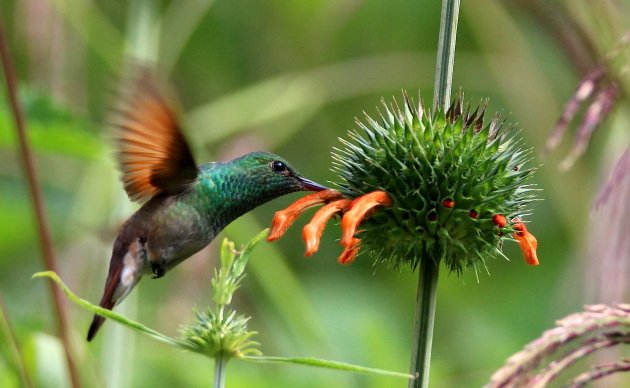
If you are like me, you can get a fair amount of birding done while traveling with your non-birder spouse… as long as you make sure you visit places with lots of other interesting activities, to keep that spouse happy. Pure eco-tourism is pretty much out of the question, because sitting in an eco-lodge all day is not much fun for a city-lover. Which is why Morelia, a UNESCO World Heritage City in the middle of a great zone for endemic Mexican birds, could be a good option for the unevenly-paired birder.
One of the advantages of Morelia as a birding/tourist destination is that we receive direct flights from Houston on United, Dallas/Fort Worth on American, and Los Angeles, Oakland, San Jose (California), and Chicago/Midway on the Mexican carrier Volaris. Most other points of origin up north can reach us with just one layover in these cities, or in Mexico City.
The downtown area of Morelia, known as the Centro Histórico (Historic Center), is entirely built with our local “pink” limestone, in varied architectural styles from over 400 years. (The city was founded in 1540.) It boasts an iconic aqueduct and a beautiful cathedral, both dramatically lit up at night. Don’t miss the spectacular Santuario de Nuestra Señora de Guadalupe. You should also take some side trips to the colonial city of Pátzcuaro, as well as Santa Clara del Cobre, where you can see traditional copper-working, and buy beautiful pieces for a fraction of what they would cost up north.
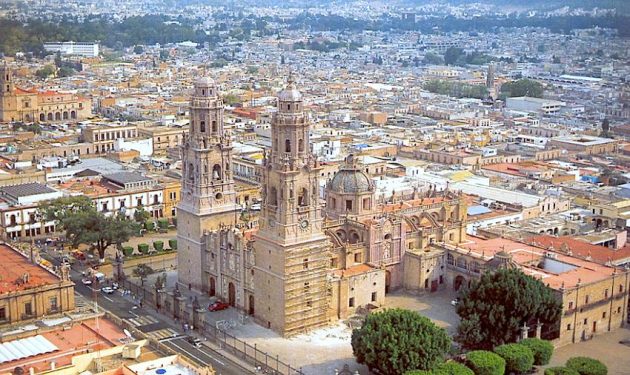 This photo is absolutely not mine. But I really want you to come bird Morelia.
This photo is absolutely not mine. But I really want you to come bird Morelia.
Your non-birding partner will probably be happiest if you stay in one of the historical hotels downtown. This is not the best birding decision. But you can console yourself by having breakfast in one of the many restaurants with outdoor seating under the stone arches facing the cathedral, where you are guaranteed to enjoy the sight and sounds of White-throated Swifts. Sorry, no photos, because… swifts.
There are any number of wonderful, endemic-rich birding sites within an hour of Morelia. (I have featured two of these in my previous posts, and will feature more in the future.) But these are the ones I would most recommend within the city itself:
Centro de Convenciones (Convention Center)
The gardens around Morelia’s Centro de Convenciones are not the best site for birding in the city. But they are very accessible to those who stay downtown, and they have lots of birds which are very accustomed to the presence of humans. You can even stay right in the middle of these gardens, at the Best Western Plus Gran Hotel.
The Convention Center is a good place to get acquainted with our two most common Hummingbirds, the Berylline (also shown above) and the Broad-billed:
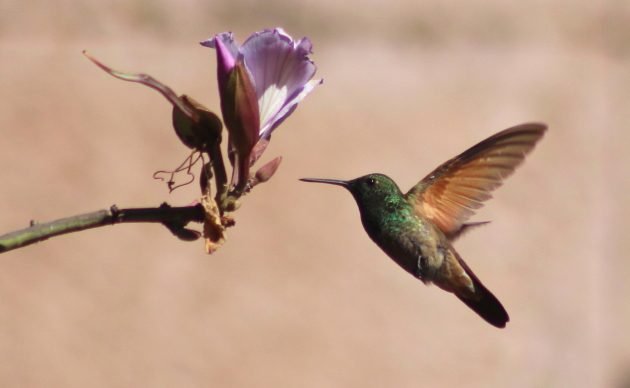
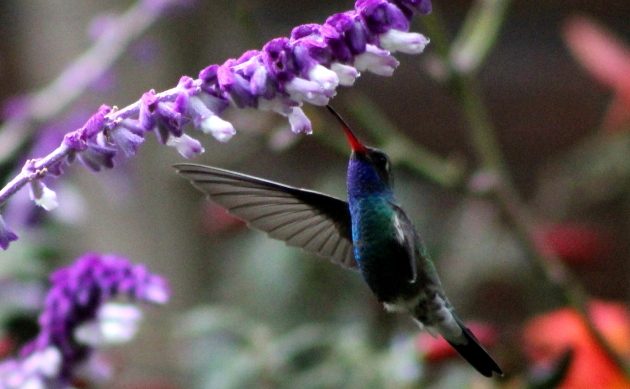 The second photo is from my garden, not from the Convention Center. But hey, that is still in Morelia.
The second photo is from my garden, not from the Convention Center. But hey, that is still in Morelia.
Oddly enough, the Convention Center gardens are the best place in Morelia to see our own endemic thrush, the Rufous-backed Robin (or Thrush, depending on your guide). You are also sure to see Bronzed Cowbirds there.
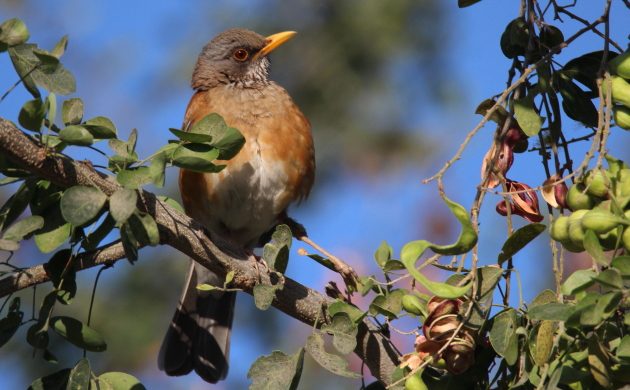 This photo is from the neighboring state of Morelos. That is not in Morelia.
This photo is from the neighboring state of Morelos. That is not in Morelia.
Cañada de los Filtros Viejos (Canyon of the Old Filters)
Now, this is a place to do some serious birding. The entrance is in a city neighborhood (mine. to be exact). But you can follow the canyon away from the city for miles, through riparian, thorn-forest, and pine-oak habitats. There are a good number of endemics and semi-endemics to be seen, such as the beautiful Golden Vireo, and the rather comical Rusty-crowned Ground Sparrow.
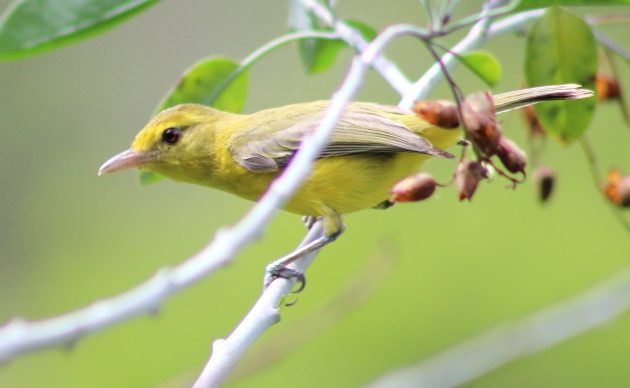
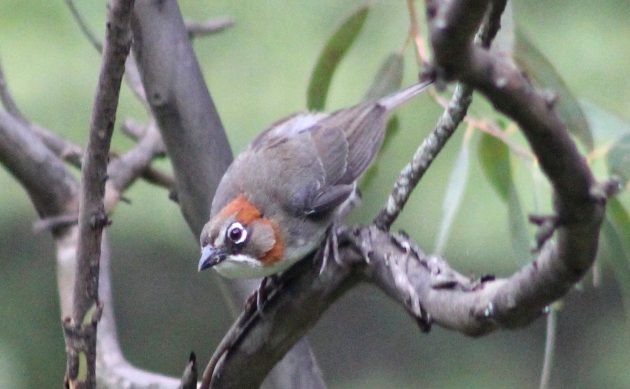
If you hear something chattering as it moves through the underbrush, it may well be a Rufous-capped Warbler.
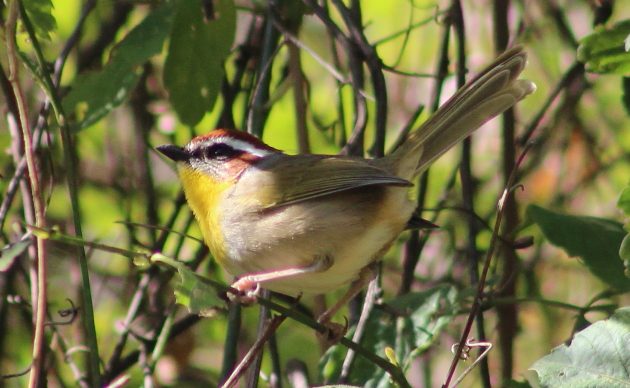
And that call you hear everywhere, but usually can’t locate? Check Merlin’s song recordings to confirm that you are hearing the ubiquitous Orange-billed Nightingale Thrush:
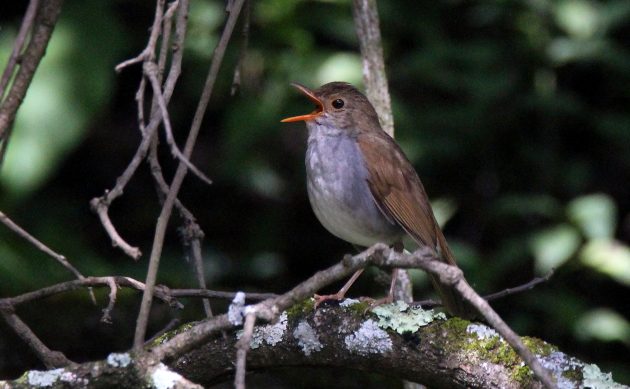
This one is certainly not an endemic, but I cannot resist including this Filtros picture of a migratory Louisiana Waterthrush, seen through a couple of tree trunks:
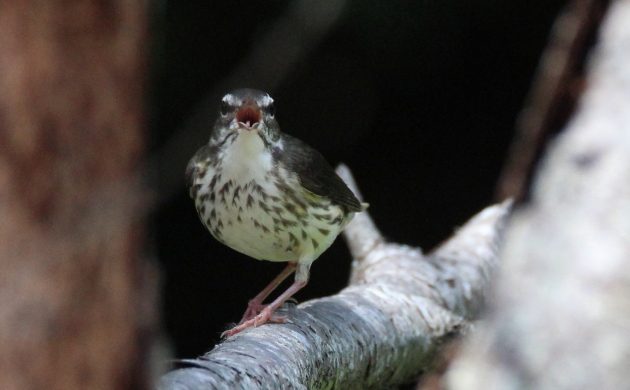
If you want to stay as close as possible to los Filtros Viejos, both of Morelia’s Holiday Inns (the normal one and the Express) are only a few blocks from the entrance; they are also right next to two large shopping centers and a wide variety of restaurants.
Jardín Botánico, Cerro de Punhuato (Botanical Garden, Punhuato Hill Natural Reserve)
It is not very likely that you would see anything here that you cannot see at the Cañada de los Filtros Viejos. (Although a friend recently saw a pair of Aztec Thrushes here. Take that, Filtros!) But it is another good option for birding, as well as offering beautiful views of the city.
Among the many species Punhuato (pronounced poon-WAH-toe) shares with los Filtros is the beautiful Blue Mockingbird. In some ways, this bird is even more frustrating than the Orange-billed Nightingale Thrush; both are often heard and rarely seen, but the Mockingbird constantly changes its song, making it much harder to identify by ear. Unlike the Northern Mockingbird’s easily recognizable two or three reps of constantly changing phrases, the Blue’s song gradually evolves as you listen, and has a lower, more “flute-y” tone.
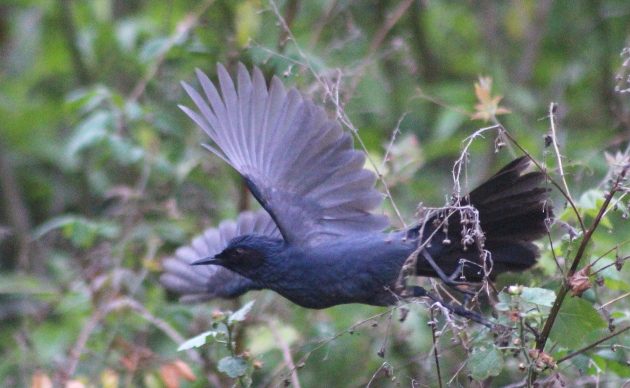
One species of interest is more common on Punhuato than in los Filtros: the Spotted Wren. This is a member of the wren group that Mexicans call matracas, because their noisy calls sound like the large spinning wooden noisemakers that Mexicans make and call by that name. The matraca group, which also includes the Cactus Wren of the American Southwest, consists of larger, highly social wrens.
I have always loved this photo from Punhuato. Not only does it show an interesting moment, either courtship or a challenge, but it taught me that the spots on the Spotted Wren can be lifted for display purposes:
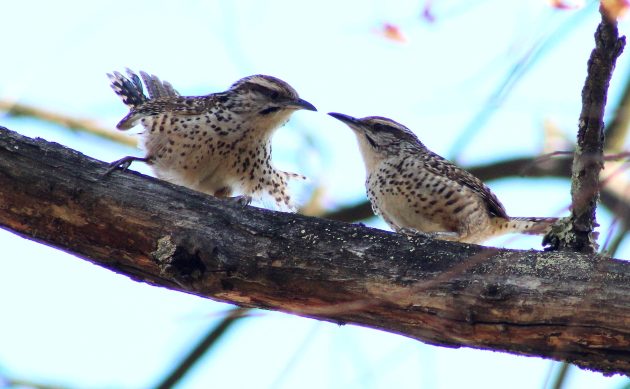
So, what are you waiting for? Come bird Morelia. And go ahead, bring the family.




 New writers welcome – please contact us for details.
New writers welcome – please contact us for details.

















Morelia is one of our options for a vacationing/birding excuse this year so this article is perfectly timed!
Determined to get a photo of a swift 😉
Thanks again!
James
If you do, James, I’d love to have you look me up. You can contact me at paulglewis@hotmail.com. Since I am a pastor, I usually bird on Mondays, rather than on the weekends. But other days can usually be arranged with enough warning. Sundays are always out of the question. Come on down!
We are coming in June and my wife is new to birding. Are there other places you would recommend? Apparently she has met you before at Vida Abundante. She said you have a good Ranchero voice. Neither of us have done any birding in Mexico besides what we have seen in the city or around the area.
Hi Paul,
I’m planning to be in Morelia for a simposio (about Latin American environmental history–I’m presenting a book I co-authored about the environmental and social damage being done bhy contemporary mechanized gold mining in El Chocó, Colombia). I hope to spend a couple of days after that birding, and was of course enthused when I read this note of yours. I will be staying downtown, but I have this question: will I be able to get to Cañada de los Filtros Viejos and the Jardín Botánical in Cerro Punhuato by taxi, and of course, will I be able to find taxis to get back.
Thanks for this post, and de antemano for any information you can give me.
(Somehow, I can only write my website in the field below in white–but I see it when I press the tab key)
Yes, Steve, you can easily take a taxi to the entrance of both these places, although you may need to pronounce their names in something like Spanish. It should be easy to get a taxi back to your hotel from the entrance to the Cañada, but you might want to make arrangements with your taxi driver to pick you up at the entrance to Jardín Botánico; there is very little traffic there. (Or call an Uber.)
Hi Paul,
I’ve been sending emails to you, but it occurred to me that maybe they’re not getting to you, so I’ll try this medium. I’ve been attending the simposio that brought me here, which ends today. Tomorrow we have an excursion to Paracutín, and then I’m hoping to do some birding and maybe a little sightseeing for three days. If you’re available this coming Monday, the 26th, or Tuesday, I would very much look forward to birding with you. BTW, the simposio has been at the Centro de Convenciones, and despite the formality of the surroundings, and the large number of people who go through, I’ve seen close to a dozen species there…
Hoping to hear from you…Saludos cordiales
Hello, Steve. I’m so sorry, my usual email has had some problems lately, and while I seem to have finally fixed them, I’m not yet checking it regularly. Monday would be great, and I’ll contact you ASAP.
I am an Australian planning to visit Morelia for two weeks from 6 April) for some Spanish and also guitar classes. i would love to do some bird-watching as well perhaps on the weekend 13-14 so I appreciate the advice above.